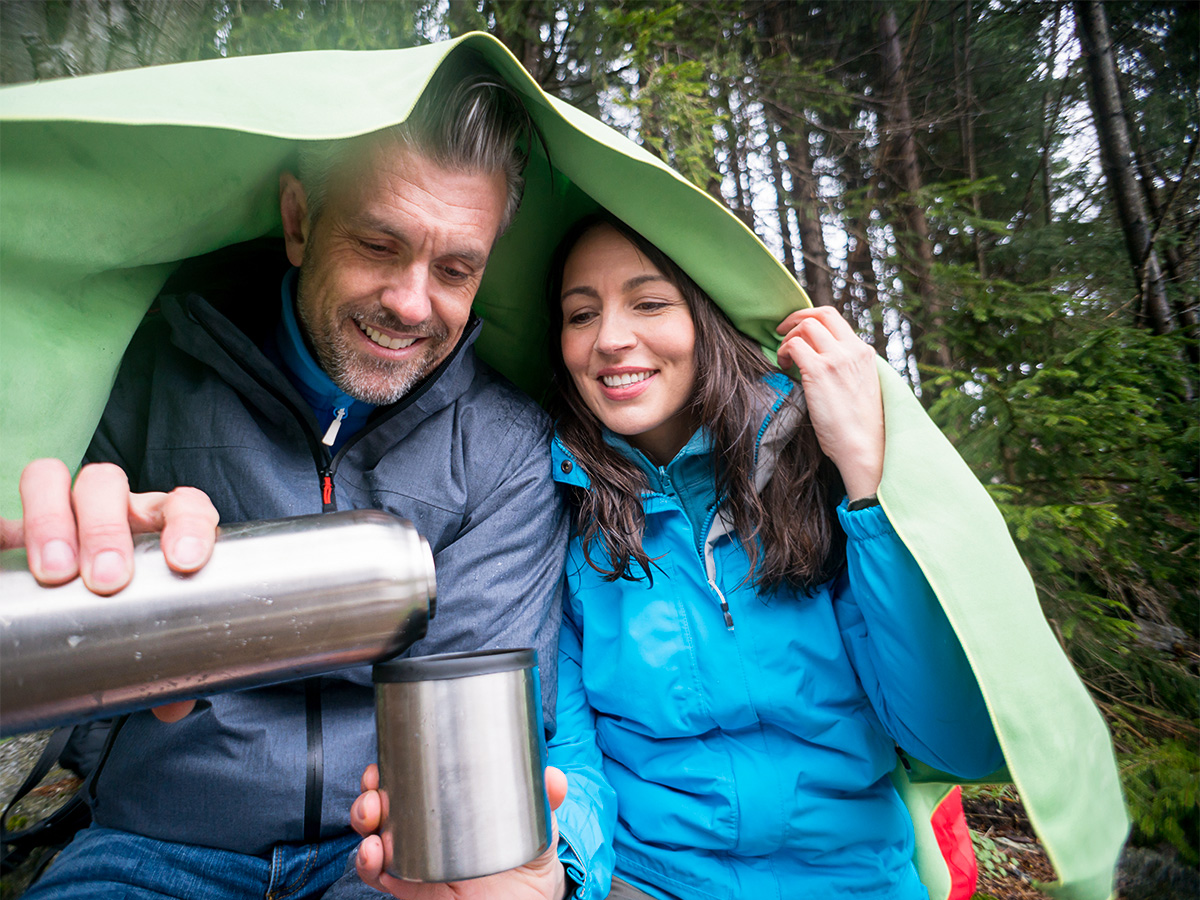Quick Tips for Northwest Camping
May 7, 2022
The difference between a great camping trip and one you’d rather forget often has to do with planning, whether you’re camping in the Blue Mountains or on a beach facing the vast Pacific Ocean. To help you out with our rainy, often-turbulent late springtime weather, we’ve put together a quick list of what to expect and how to have a great time camping in the rain, at the beach, or hiking in to a remote location.
Rainy-Day Camping
Rain isn’t special to the west sides of Washington and Oregon. Even the central and eastern sides of the state get their fair share of rain. To enjoy your camping trip, even in a downpour, be sure to pack a few essentials, including a tarp to place over your tent and social areas. Before putting up your tent, make sure you are not in a dry creek bed or too near any waterways that could flood. Nothing is worse than waking up in a few inches (or feet) of water. It’s often best to set up camp on high, flat ground.
If you’re out hiking during a rainstorm, watch out for water crossings, muddy trails, and slippery rocks.
Packing essentials:
- Large tarp or rain-fly
- Ground cloth to use inside your tent for extra protection
- Rain gear (jackets, pants, boots)
- Rain cover for your backpack and gear
- Synthetic clothing that dries quickly
- Plastic bags to store electronics and other gear
- Gas stove
- Plenty of quick-drying towels
- Newspaper for starting a campfire
Coastal tip: If you’re using a rain-fly, don’t let it touch the walls of your tent, otherwise water will simply seep through into your tent.
Beach Camping
There is something special about camping on the ocean and falling asleep to the gently crashing waves. However, if you make camp inside the high tide line, you could wake up to the waves against your tent and your gear floating out to sea. Before setting up your tent, it’s vital that you find the high-tide line. You can usually see it in the sand. Just remember that the tide goes even higher when there’s a full (or nearly full) moon. As long as you camp far outside that line, you should be okay.
If you plan to just lay under the stars in a sleeping bag, put down a large blanket first. This will keep sand and other small critters from invading your peaceful night.
A word on bonfires: There are plenty of beaches in Oregon and Washington that allow bonfires right on the beach. Check with locals and rangers before building yours.
Packing essentials:
- Deep tent spikes (for sandy conditions)
- Large blanket
- Plenty of quick-drying towels
- Plastic bags to store electronics and other gear
- Tarp (to create a barrier between your tent and the sand)
- Beach toys
- Fire starter (to ignite driftwood)
- Coastal tip: Some ocean beaches require a permit for overnight camping. Check with local rangers for information on your chosen location.
Hike-in Camping
The beauty of hiking to your camping site is the incredible peace and quiet. However, that peace comes at a price. To make the camping trip a success, pack-in everything you need. Besides a tent and sleeping bag, bring plenty of the essentials to ensure safety and fun.
Packing essentials:- Sun protection (sunglasses, sunscreen)
- Extra clothing (jackets, rain gear, socks)
- Plenty of lights (don’t forget the batteries)
- First aid kit (or two)
- Navigation (GPS or an old-fashioned map)
- Fire supplies (kindling, matches, lighters, fire starter)
- Extra food (pack at least double what you think you’ll need)
- Extra water
- Emergency shelter and hand warmers
- Hatchet and knife
We’re Your Camping Headquarters
You’ll find everything you need for your next camping, hiking, hunting, fishing, or day in the outdoors at your nearby Coastal. That includes coolers, fishing supplies, guns and ammunition, clothing, tents, tarps, hiking boots, safety gear, and a whole lot more. Stop by today and we’ll show you around.
